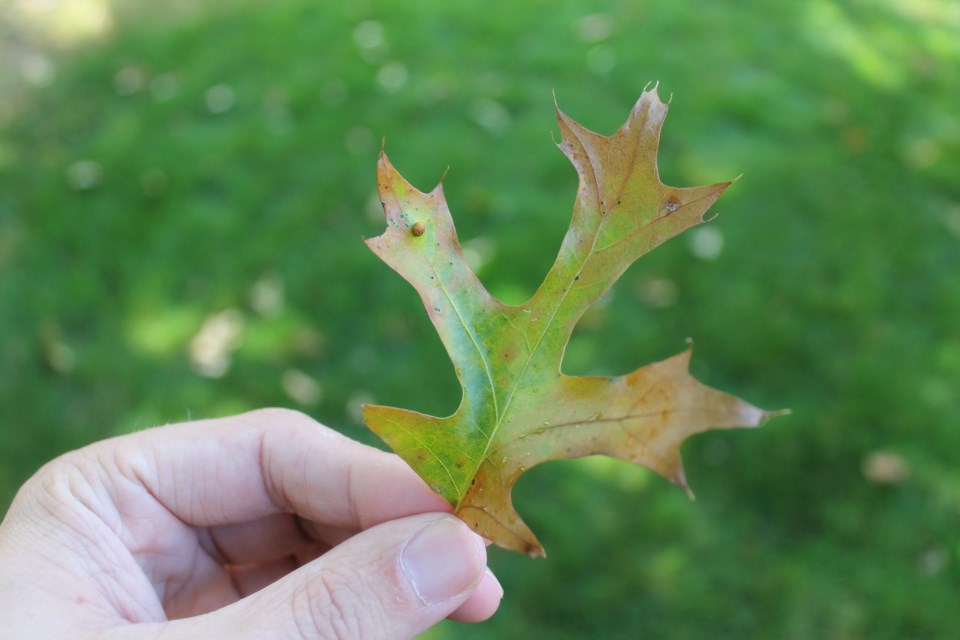The Nature Conservancy of Canada (NCC) is raising concerns about an invasive pathogen called oak wilt that is emerging as a major threat to oak trees.
Oak wilt is a vascular disease of oak trees caused by a fungus that can deliver quick mortality rates in affected trees, said Kyle Borrowman, acting director with the Nature Conservancy of Canada’s habitat restoration program in Ontario. Red oak trees are most susceptible and can die within two to six weeks after infection.
“It is a fungus that infects the tree and it grows spores on the outer sap wood of the trees, and it restricts the flow of water and nutrients up and down through the tree. So basically just choking it off from the inside,” he said.
It has been discovered in Niagara Falls and in Midhurst in Simcoe County.
Ways to identify signs and symptoms of oak wilt include cracks in the tree trunk, along with green leaves that start wilting and turn brown at the outer edges. You may also see early and sudden leaf drop of dull green, brown and yellow leaves along with white, grey or black fungus.
“Then what happens is from the top of the tree down they start browning and wilting prematurely. It doesn't look quite like what we have with our fall leaves changing colour, it's premature and it just kind of looks funky in that sense.”
Oak wilt has been reported throughout the northwestern United States, along the Great Lakes region and southwest as far as Texas. It is recommended that people who suspect tree damage should contact the Canadian Food Inspection Agency Contact CFIA online - Canadian Food Inspection Agency (canada.ca). NCC has worked with CFIA in previous summers with visual surveys aimed at early detection of the fungal pathogen in areas where it is not known to occur.
Borrowman said the invasive species spreads both above and below the ground. Spores attract sap and bark feeding beetles, which spreads it to other trees. It can also be transported unknowingly and unintentionally by people moving firewood or other wood products. If the roots of the infected tree are grafted or connected with the roots of another tree nearby within the forest, the fungus can travel root to root from tree to tree.
This fungus has the potential to devastate forests in Canada, which is bad for recreation, for companies that rely commercially on wood materials, along with the many birds, animals and insects that depend on these areas as a source for food and habitats, he said.
“There are acorns that a lot of animals depend on. They’re also an extremely important tree species, not only for animals and biodiversity, but also commercial use within Canada. Losing the trees would reduce our timber and wood supply. They're also very a very common tree in our urban forests as well and provide shade cooling, stabilize soils, clean our air and reduce air pollution. They provide a lot of environmental and ecological benefits,” he added.



